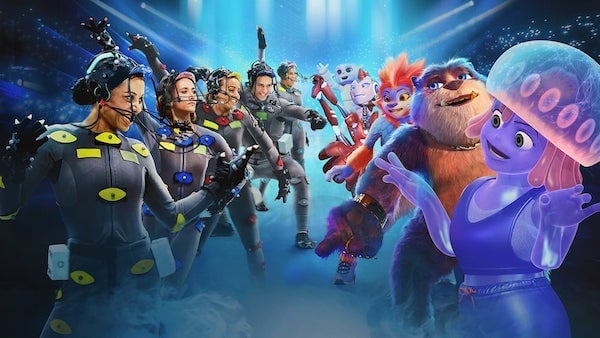In the first of two interviews with The Mill, we speak with the LA studio’s Deputy Head of 3D, Jason Monroe. Learn about his day to day, his thoughts on real-time, and what he believes is the most important thing for anyone working in VFX to remember. See who we’re interviewing next at the end of the article!
You’ve worked in the industry for over 20 years. Can you tell us a little about that journey?
I graduated from Indiana University with a degree in Kinesiology, studying the mechanics of body movements. However, I’ve always loved to draw, paint, and form. And when the first Toy Story movie came out, I found it inspirational; so much so, I eventually moved away from the medical industry.
I felt like there was an opportunity to combine my knowledge of movement with computer animation, so I went back to school. I moved to Los Angeles in ’98 and started working in the video game industry for a small company called NovaLogic. I worked mostly on game content and assets for a first-person shooter on the PC. From there, I went on to spend a chunk of time at EA, working on the Medal of Honor series.
I made the switch over to visual effects in 2007 and worked at several studios before freelancing at The Mill in 2013. In 2015 I was bought on as a full-time CG Artist and have since been promoted to CG Lead Artist and Deputy Head of 3D.
What’s exciting to you about the field of 3D?
It continually feels like a ‘new’ industry. It’s always evolving, the demand is ever-changing, and the pace of the growth is incredibly fast, which is exciting. The way I approach projects now is different from that of even three years ago, and vastly different from when I first got into the industry.
You could write a thesis on the various changes that have occurred. The changes in technology have been monumental, with things like augmented reality, virtual reality, and real-time powered by game engines all very inspiring. We’re always looking for ways to incorporate these new technologies into our pipelines at The Mill.
Do you see real-time as crucial technology for any 3D department?
I’ve been using real-time since my early days in the video game industry. I started to see the power of real-time tech – not just in gaming but in VFX – when I first used Epic Games’ Unreal Engine 3. When I left EA, I went to work for the start-up Trilogy Studios. We dove headfirst into Unreal 3 as it was the engine we thought best to create IP and content. It did everything we needed it to do – immediately.
However, I don’t see real-time as a “crucial” technology, per se. I see it as yet another potent tool for a studio to have in its toolbox.
Every piece of software has its uses depending on whether it applies to the specific job and creative ask (and every job is different). Sometimes a piece of software is the perfect tool for the job, and sometimes it isn’t; it’s always project-dependent. So I think real-time will undoubtedly make sense, but only on the projects that will gain most from that way of working.
That said, any 3D department that doesn’t embrace real-time technology is doing themselves a disservice. It’s a super-charged tool when you need it. At The Mill, we are fortunate enough to partner with leading real-time developers and creators around the world. It’s a true collaboration in that we report back as we experiment on the impact the technology has and get so much support from the companies on showcasing what is possible in real-time. And there is a lot that is possible.
What improvements have you made recently to The Mill’s 3D pipeline?
We have a very high quality bar at The Mill. To meet and exceed these expectations – while continually increasing speed and efficiency – we have built upon our pipeline to embrace a procedural workflow. We are currently writing tools that directly link into the tools provided to us by ftrack to create faster, more efficient creative workflows.
Can you please talk a little about your day-to-day at The Mill?
We are primarily a commercial-focused studio, so I mostly work on short-form content. Anywhere from 15 seconds to two minutes is typical, from big name brands to video game cinematics and everything in-between. As Deputy Head of 3D, I have three core priorities: to make sure that all the individual departments within CG have the resources they require, to facilitate effective communication, and to assure the delivery of high-quality content for our creative partners.
Recently, we collaborated with Riot Games to craft a tenth-anniversary celebration film for League of Legends. It was exciting to utilize different VFX techniques in a spot as long as this (which clocked in at 45 minutes). We had to make creative choices that pushed the narrative forward and shaped the journey. It was crucial for this to feel like a real thank-you to the players, too, so we peppered Easter eggs throughout the film. These homages are present from early on and tease the announcements that come at the end, providing the community with hints that only they would understand.
How does ftrack fit into your daily workflow?
ftrack has a system that allows us to quickly and efficiently track shots and assets within our department – and one that we can directly integrate with The Mill’s systems. This system enables CG artists to increase the efficiency with which they can check notes and quickly adjust to meet the needs of each project – and the quality bar we set.
ftrack really does fit seamlessly into our workflow. It encourages not only inter-studio communications but also international studio communications across our offices in London, New York, Los Angeles, Chicago, Bangalore, and Berlin. ftrack is integral to a global information flow when collaborating across such considerable geographical distances.
What is some of the best advice you’ve received over your 20 years in the industry?
I’ll pass on something that I think would work for just about any industry. Very early on, at a time when I was working a lot of late hours, one of my supervisors told me to “make sure that you don’t give so much of yourself to this industry that you don’t have something in the tank for your friends and family when you leave.”
It’s essential to keep some of yourself for the people that you love. I think it’s important to pass that perspective on to people who are new in the industry and wanting to prove themselves, but also to those later on in their careers, where there’s pressure to perform and to hold onto what they’ve achieved. Remember that, as much as we love what we do, we do it so that we can enjoy our time outside of work.
With that in mind…what do you enjoy outside of work?
I enjoy time with my wife and kids because they don’t care that I run a CG department; they keep it real and call me out on things. They remind me of what really matters. I’m also a big fan of all physical activity, be that mountain biking, rock climbing, hiking, or just being out in nature. It’s all separate from work, but it all helps with work too, in a way.
Bring your team together with ftrack
Collaborate closely – ftrack Studio makes it easy to keep your entire team in sync ?

More from the blog
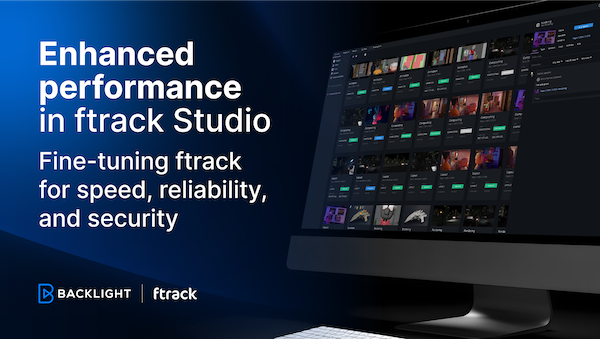
Enhanced performance in ftrack Studio: Fine-tuning for speed, reliability, and security
Chris McMahon | API, Developer, New features, Product, Productivity, Studio | No Comments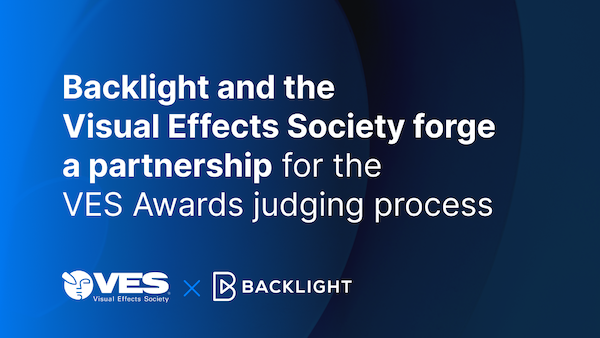
Backlight and the Visual Effects Society forge a partnership for the VES Awards judging process
Kelly Messori | Case Study | No Comments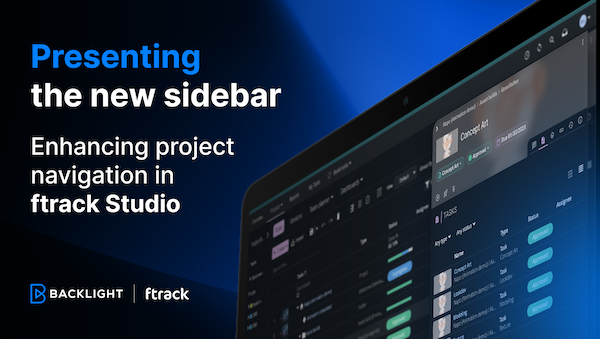
Presenting the new sidebar: Enhancing project navigation in ftrack Studio
Chris McMahon | New features, Product, Release, Studio | No Comments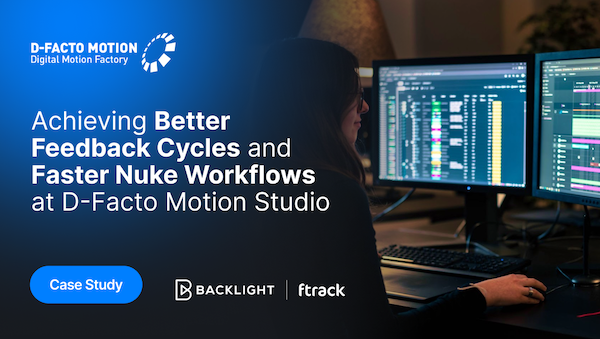
Achieving Better Feedback Cycles and Faster Nuke Workflows at D-Facto Motion Studio
Kelly Messori | Case Study, Studio | No Comments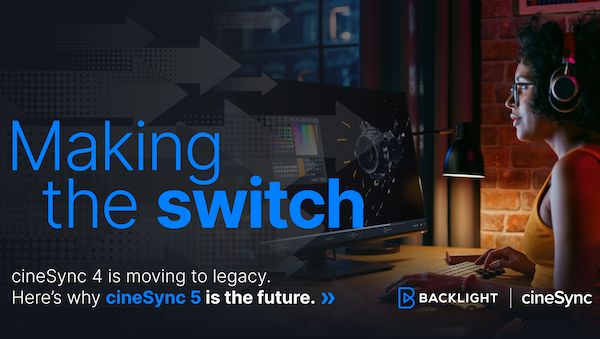
Making the switch: The transition to cineSync 5
Mahey | Announcements, cineSync, News, Product | No Comments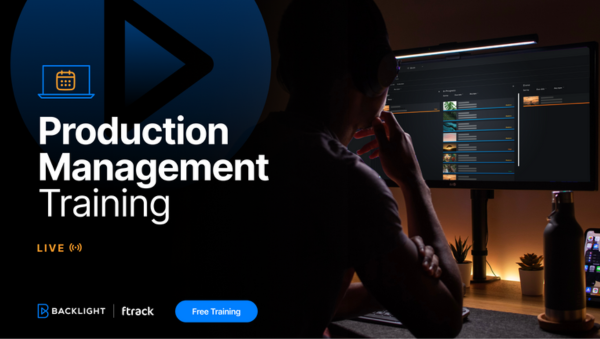
Supporting Your Studio: Free ftrack Studio Training and Office Hours from Backlight
Kelly Messori | News | No Comments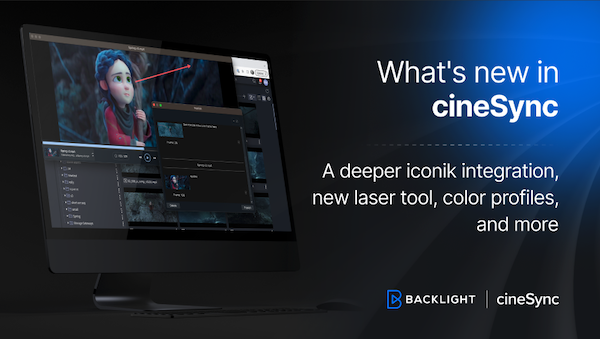
What’s new in cineSync – a deeper iconik integration, laser tool, OTIOZ support, and more
Chris McMahon | cineSync, New features, Product, Release | No Comments